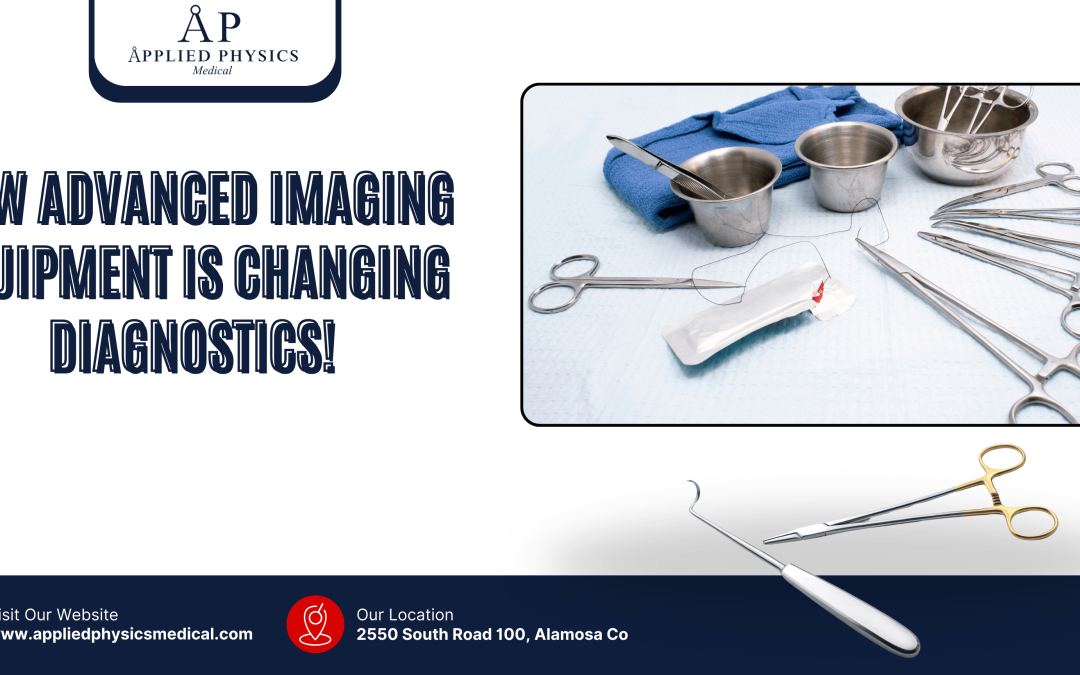Introduction
Advanced imaging equipment has revolutionized the field of medical diagnostics, providing healthcare professionals with unprecedented tools to visualize the internal structures of the human body. This technology encompasses a variety of modalities, including magnetic resonance imaging (MRI), computed tomography (CT), ultrasound, and positron emission tomography (PET). Each of these imaging techniques offers unique advantages, enabling clinicians to diagnose conditions with greater accuracy and speed than ever before.
As a result, advanced imaging has become an integral part of modern medicine, influencing treatment decisions and improving patient outcomes. The evolution of imaging technology has been driven by both scientific advancements and the increasing demand for precise diagnostic tools. With the ability to capture detailed images of organs, tissues, and even cellular structures, advanced imaging equipment allows for the early detection of diseases such as cancer, cardiovascular disorders, and neurological conditions.
This early intervention is crucial, as it often leads to more effective treatment options and improved survival rates. As healthcare continues to evolve, the role of advanced imaging equipment will only become more significant in shaping the future of diagnostics.
Key Takeaways
- Advanced imaging equipment is revolutionizing medical diagnostics by providing clearer and more detailed images of the body’s internal structures.
- Advancements in imaging technology, such as MRI, CT scans, and ultrasound, have greatly improved the accuracy and efficiency of medical diagnoses.
- The impact of advanced imaging on medical diagnostics includes earlier detection of diseases, more precise treatment planning, and improved patient outcomes.
- The benefits of advanced imaging equipment in healthcare include faster and more accurate diagnoses, reduced need for invasive procedures, and better monitoring of treatment effectiveness.
- Despite its many advantages, advanced imaging also presents challenges and limitations, such as high costs, potential overuse, and the need for specialized training to interpret results.
Advancements in Imaging Technology
Recent years have witnessed remarkable advancements in imaging technology, characterized by enhanced resolution, speed, and accessibility. Innovations such as 3D imaging and functional MRI have transformed the way clinicians interpret diagnostic images. For instance, 3D imaging allows for the reconstruction of complex anatomical structures, providing a more comprehensive view that aids in surgical planning and intervention.
Functional MRI, on the other hand, measures brain activity by detecting changes in blood flow, offering insights into neurological disorders that were previously difficult to assess. Moreover, the integration of artificial intelligence (AI) into imaging technology has further propelled its capabilities. AI algorithms can analyze vast amounts of imaging data quickly and accurately, assisting radiologists in identifying abnormalities that may be overlooked by the human eye.
This not only enhances diagnostic accuracy but also reduces the time required for image interpretation. As these technologies continue to evolve, they promise to make advanced imaging more efficient and reliable, ultimately benefiting both healthcare providers and patients.
Impact of Advanced Imaging on Medical Diagnostics
The impact of advanced imaging on medical diagnostics is profound and multifaceted. One of the most significant contributions is the ability to detect diseases at earlier stages, which is crucial for conditions like cancer where early treatment can dramatically improve prognosis. For example, mammography has been instrumental in the early detection of breast cancer, leading to timely interventions that save lives.
Similarly, advanced imaging techniques such as CT scans have improved the diagnosis of pulmonary embolisms and other critical conditions that require immediate attention. In addition to early detection, advanced imaging has also enhanced the precision of diagnoses. By providing detailed images that reveal the size, shape, and location of abnormalities, these technologies enable healthcare providers to make informed decisions regarding treatment options.
This precision is particularly important in fields such as oncology, where targeted therapies can be tailored based on the specific characteristics of a tumor. As a result, advanced imaging not only improves diagnostic accuracy but also contributes to personalized medicine approaches that consider individual patient needs.
Benefits of Advanced Imaging Equipment in Healthcare
| Benefits of Advanced Imaging Equipment in Healthcare |
|---|
| 1. Improved diagnostic accuracy |
| 2. Early detection of diseases |
| 3. Better treatment planning |
| 4. Reduced need for invasive procedures |
| 5. Faster and more efficient patient care |
| 6. Enhanced patient outcomes |
| 7. Research and development of new medical techniques |
The benefits of advanced imaging equipment extend beyond improved diagnostics; they also encompass enhanced patient care and operational efficiency within healthcare systems. One notable advantage is the non-invasive nature of many imaging techniques.
which minimizes patient discomfort and reduces recovery times compared to traditional diagnostic methods that may require invasive procedures. For instance, ultrasound is widely used in obstetrics to monitor fetal development without posing risks to the mother or child.
Furthermore, advanced imaging technologies facilitate better communication among healthcare teams. High-quality images can be easily shared among specialists, allowing for collaborative decision-making and comprehensive care planning. This interdisciplinary approach is particularly beneficial in complex cases where multiple experts are involved in a patient’s treatment.
Challenges and Limitations of Advanced Imaging
Despite the numerous advantages offered by equipment, several challenges and limitations persist within the field. One significant concern is the high cost associated with acquiring and maintaining advanced imaging technologies. Many healthcare facilities face financial constraints that limit their ability to invest in state-of-the-art equipment, potentially leading to disparities in access to quality diagnostic services.
This issue is particularly pronounced in rural or underserved areas where resources may be scarce. Additionally, there are concerns regarding radiation exposure associated with certain imaging modalities, such as CT scans. While the benefits often outweigh the risks, it is essential for healthcare providers to carefully consider the necessity of each imaging procedure and explore alternative options when appropriate.
Future Trends in Advanced Imaging Diagnostics
Hybrid Imaging Techniques: A New Era in Diagnostic Accuracy
One emerging trend is the increasing use of hybrid imaging techniques that combine multiple modalities to provide comprehensive diagnostic information. For example, PET/CT scans merge metabolic information from PET with anatomical details from CT, offering a more complete picture of disease processes. This integration enhances diagnostic accuracy and aids in treatment planning.
Telemedicine and Advanced Imaging: Expanding Access to Specialist Care
Another promising trend is the growing application of telemedicine in conjunction with advanced imaging technologies. Remote consultations facilitated by high-quality imaging can improve access to specialist care for patients in remote locations.
The Future of Advanced Imaging: Delivering Timely Diagnoses Across Geographical Barriers
As telehealth continues to expand will likely play a crucial role in delivering timely diagnoses and treatment recommendations across geographical barriers.
Ethical Considerations in the Use of Advanced Imaging Technology
As advanced imaging technology becomes increasingly prevalent in medical practice, ethical considerations surrounding its use must be addressed. One primary concern is patient privacy and data security. The storage and transmission of sensitive medical images raise questions about how patient information is protected from unauthorized access or breaches.
Healthcare providers must implement robust security measures to safeguard patient data while ensuring compliance with regulations such as HIPAA. Additionally, ethical dilemmas may arise regarding informed consent for advanced imaging procedures. Patients should be adequately informed about the risks and benefits associated with each imaging modality before undergoing a procedure.
This includes discussions about potential radiation exposure or the implications of incidental findings that may arise during imaging studies. Ensuring that patients are fully informed empowers them to make educated decisions about their healthcare while fostering trust between patients and providers.
Conclusion
Advanced imaging equipment has fundamentally transformed medical diagnostics by enhancing accuracy, facilitating early detection, and improving patient care. While challenges remain, ongoing advancements in technology promise a future where these tools will continue to evolve and play an even more significant role in healthcare delivery. As we navigate this landscape, it is essential to address ethical considerations and ensure equitable access to these life-saving technologies for all patients.


